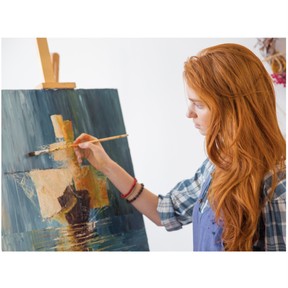
Analyzing story illustrations
I can analyze visuals to better understand a story.



8,000 schools use Gynzy
92,000 teachers use Gynzy
1,600,000 students use Gynzy
General
Students learn to analyze the visuals that accompany a story and understand that a visual can provide extra information about a story or support understanding of a story.
Standards
CCSS.ELA-Literacy.RL.4.7
Learning objective
Students will be able to analyze illustrations in a story.
Introduction
Ask students to imagine their favorite book or story. What do they see in their heads? Do they see the characters or the setting? Remind students what the difference between the two is. Have students share what they imagine when thinking about their favorite books or stories. Tell students that texts sometimes have visuals added to them in the form of an illustration, photograph, video or movie. These images relate to the text. Analyzing visuals is what you do when you determine what the visual adds to the text you are reading. They help confirm understanding or make personal connections to the text.
Instruction
Read the given text and ask students what the image adds to the text. Next, ask students to determine if the visuals match the texts given. As a class, read Aesop's Fable- "The Lion and the Mouse" and then watch the video version linked in the lesson. Compare and contrast the text and video using the Venn diagram as a class. Then play the audio of "The Mixed-Up Chameleon" by Eric Carle. Have students draw what they visualize and then watch the video. Are the drawings similar or different? Ask students to select one of the images to write a one-paragraph story about. Set an amount of time to dedicate to writing. Then have students compare their stories with their neighbors. Emphasize that every story should be different because everyone has a different imagination and interpretation of the images! Have the students form pairs. The students should write a one-paragraph story and draw a picture to go with the passage. Then have them cover their drawings and exchange with their partners, who must draw an image for the passage. Uncover and compare and contrast!
Quiz
Students answer ten questions covering key terminology as well as asking them to determine what might be present in a visual with a specific text topic.
Closing
Discuss how analyzing visuals can help you understand a story and add information to the text. Close by having your students turn and ask each other the engaging questions given on the interactive whiteboard.
Teaching tips
You can help students during "The Mixed-up Chameleon" by asking them to visualize what the Chameleon looked like at the end, or at a specific intermediary step.
You can ask students to create a visual for writing that the students have done earlier and have in their writing portfolios instead of having them write in class.
The online teaching platform for interactive whiteboards and displays in schools
Save time building lessons
Manage the classroom more efficiently
Increase student engagement
Discover more!
About Gynzy
Gynzy is an online teaching platform for interactive whiteboards and displays in schools.
With a focus on elementary education, Gynzy’s Whiteboard, digital tools, and activities make it easy for teachers to save time building lessons, increase student engagement, and make classroom management more efficient.



